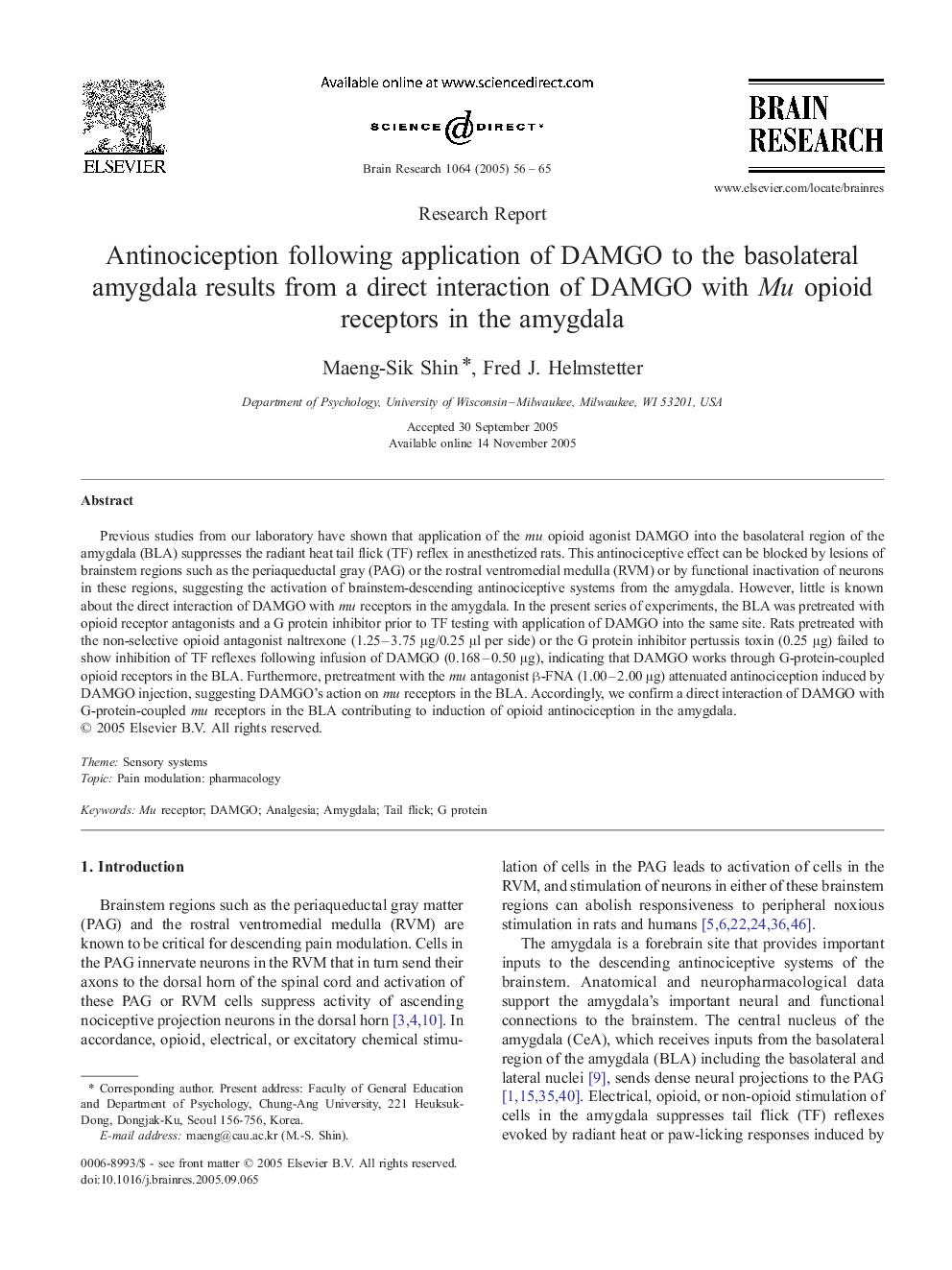| کد مقاله | کد نشریه | سال انتشار | مقاله انگلیسی | نسخه تمام متن |
|---|---|---|---|---|
| 9415673 | 1614322 | 2005 | 10 صفحه PDF | دانلود رایگان |
عنوان انگلیسی مقاله ISI
Antinociception following application of DAMGO to the basolateral amygdala results from a direct interaction of DAMGO with Mu opioid receptors in the amygdala
دانلود مقاله + سفارش ترجمه
دانلود مقاله ISI انگلیسی
رایگان برای ایرانیان
کلمات کلیدی
موضوعات مرتبط
علوم زیستی و بیوفناوری
علم عصب شناسی
علوم اعصاب (عمومی)
پیش نمایش صفحه اول مقاله

چکیده انگلیسی
Previous studies from our laboratory have shown that application of the mu opioid agonist DAMGO into the basolateral region of the amygdala (BLA) suppresses the radiant heat tail flick (TF) reflex in anesthetized rats. This antinociceptive effect can be blocked by lesions of brainstem regions such as the periaqueductal gray (PAG) or the rostral ventromedial medulla (RVM) or by functional inactivation of neurons in these regions, suggesting the activation of brainstem-descending antinociceptive systems from the amygdala. However, little is known about the direct interaction of DAMGO with mu receptors in the amygdala. In the present series of experiments, the BLA was pretreated with opioid receptor antagonists and a G protein inhibitor prior to TF testing with application of DAMGO into the same site. Rats pretreated with the non-selective opioid antagonist naltrexone (1.25-3.75 μg/0.25 μl per side) or the G protein inhibitor pertussis toxin (0.25 μg) failed to show inhibition of TF reflexes following infusion of DAMGO (0.168-0.50 μg), indicating that DAMGO works through G-protein-coupled opioid receptors in the BLA. Furthermore, pretreatment with the mu antagonist β-FNA (1.00-2.00 μg) attenuated antinociception induced by DAMGO injection, suggesting DAMGO's action on mu receptors in the BLA. Accordingly, we confirm a direct interaction of DAMGO with G-protein-coupled mu receptors in the BLA contributing to induction of opioid antinociception in the amygdala.
ناشر
Database: Elsevier - ScienceDirect (ساینس دایرکت)
Journal: Brain Research - Volume 1064, Issues 1â2, 7 December 2005, Pages 56-65
Journal: Brain Research - Volume 1064, Issues 1â2, 7 December 2005, Pages 56-65
نویسندگان
Maeng-Sik Shin, Fred J. Helmstetter,